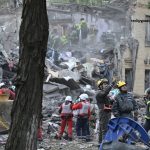After weeks of anticipation, the ceasefire in Gaza offered residents a rare moment of hope. Ameen al-Zein, a Gaza Residents, welcomed the news and encouraged people to return to their homes. Just thirty minutes later, he was killed in an Israeli strike on the school where he had been sheltering in Beit Lahia.
- The Fragility of the Ceasefire
- Impact on Children and Education
- Ongoing Violence Despite International Confidence
- Life in Gaza Under a Fragile Ceasefire
- The Harsh Reality
- Frequently Asked Questions
- What caused the recent violence in Gaza despite the ceasefire?
- How many people were affected by the recent bombings in Gaza?
- Are children safe in Gaza during the ceasefire?
- How has the ceasefire impacted daily life in Gaza?
- What are the main challenges for medical workers in Gaza?
- Can Gazans trust the ceasefire to hold?
- How is the international community responding to Gaza’s situation?
- Conclusion
“He felt so happy and relieved when the ceasefire was announced,” said his wife, Maryam. “He believed the bloodshed would stop and people could live in peace. Sadly, that feeling didn’t last.”
Zein’s death was among 115 fatalities and 352 injuries in a single day of Israeli bombardment this week, marking the deadliest day since the ceasefire began on October 10 and one of the most violent days of the two-year conflict.
The Fragility of the Ceasefire
The recent attacks underscore a harsh reality: despite the truce, violence in Gaza remains unpredictable. Many residents fear that the ceasefire does not signal an end to the war, but rather a temporary pause with sporadic bursts of attacks. The randomness of these strikes makes daily life and future planning nearly impossible.
Hussain Abu Munir, a nurse commuting from southern to northern Gaza, described the anxiety of navigating life under the ceasefire. Traveling with other displaced medical workers, he must pass through checkpoints that can close unexpectedly.
“Each day we go and return feels like embarking on a dangerous, uncertain journey,” Abu Munir said. “My biggest fear isn’t for myself but for my children, whom I leave behind in the south. I worry Israel might close the Netzarim checkpoint while I’m at work, leaving me unable to return home.”
Even routine commutes carry risk. Abu Munir recently experienced shells falling near the Netzarim checkpoint. While he passed safely, the unpredictability reinforces the fragility of daily life in Gaza.
Read More: Global Leaders Gather for Billion-Dollar Grand Egyptian Museum Inauguration
Impact on Children and Education
Children are among the most affected by this unstable ceasefire. Schools and playgrounds, traditionally spaces of learning and play, have been overtaken by the struggle for survival. English teacher Ikram Nasser notes that children, deprived of stability, often chase food, water, and aid.
“Many have become more aggressive and rough, not because they chose to, but because of the reality they’ve been forced to live,” Nasser said. Early in the ceasefire, some children returned to makeshift classrooms, arriving an hour before lessons out of a longing for normal life.
However, repeated bombings have shattered these fragile moments of normalcy. Parents and teachers now worry that the ceasefire will not provide the safety needed for children to resume education fully.
Ongoing Violence Despite International Confidence
International mediators continue to express confidence in the truce. Former US President Donald Trump emphasized that nothing would jeopardize it, while Vice-President JD Vance downplayed recent attacks as minor “skirmishes.” Yet for Gazans, the reality is far more precarious.
On Wednesday, Israel conducted another strike, targeting a Hamas weapons cache intended for an imminent attack. These repeated violations echo the situation in Lebanon, where airstrikes continue despite a year-old truce.
Life in Gaza Under a Fragile Ceasefire
The psychological toll of living under constant uncertainty is profound. Adults must navigate daily life under the threat of unpredictable violence, while children experience social and emotional disruption. Families like the Zeins live with the knowledge that any moment of hope can be destroyed suddenly.
Despite this, resilience persists. Teachers like Nasser strive to restore a sense of normalcy for children, while medical workers like Abu Munir continue to provide care under extreme risk. Yet for most residents, survival remains a delicate balance of hope and fear.
“Even now, we don’t feel safe,” Nasser said. “Every day brings a new violation of the ceasefire. The situation remains extremely difficult for us as mothers and teachers. We no longer trust that the truce will hold.”
The Harsh Reality
Ceasefires in prolonged conflicts often bring only temporary relief. For Gazans, pauses in violence can feel just as frightening as open warfare. Life under a fragile truce requires constant vigilance, adaptability, and courage.
As the ceasefire endures—or fails—the people of Gaza remain caught between hope and fear. They long for peace and the chance to rebuild their lives, yet live with the sobering knowledge that calm can be shattered without warning. For now, the streets, schools, and homes of Gaza are shaped not by freedom or safety, but by the precarious balance between survival and uncertainty.
Frequently Asked Questions
What caused the recent violence in Gaza despite the ceasefire?
Violence escalated after Palestinian militants attacked Israeli troops and Israel conducted airstrikes, violating the fragile truce.
How many people were affected by the recent bombings in Gaza?
According to Gaza’s health ministry, 115 people were killed and 352 injured during one day of airstrikes.
Are children safe in Gaza during the ceasefire?
Children remain at risk as schools and playgrounds are disrupted, and the threat of sudden attacks continues.
How has the ceasefire impacted daily life in Gaza?
While initially offering hope, the ceasefire has created uncertainty, making commuting, work, and normal routines unpredictable.
What are the main challenges for medical workers in Gaza?
Medical staff face life-threatening risks traveling to hospitals, with over 1,700 healthcare workers killed during the war.
Can Gazans trust the ceasefire to hold?
Many residents remain skeptical, as repeated violations have undermined confidence in long-term safety and stability.
How is the international community responding to Gaza’s situation?
International mediators express confidence in the truce, but their statements often contrast sharply with the daily realities on the ground.
Conclusion
The ceasefire in Gaza has offered only a fragile sense of relief. While brief pauses in violence create moments of hope, unpredictable bombings and daily uncertainty continue to dominate life for residents. Children struggle to reclaim normalcy, medical workers risk their lives, and families live in constant fear that the truce could collapse at any moment. For Gazans, true safety and stability remain elusive, underscoring that a ceasefire alone cannot end the enduring cycle of conflict.







